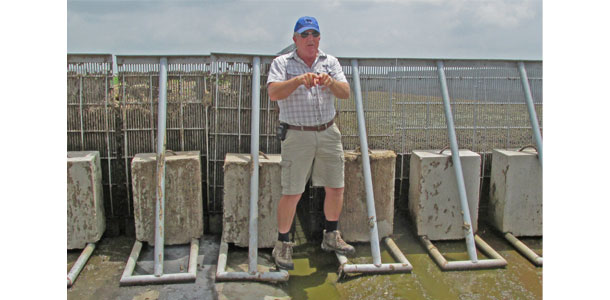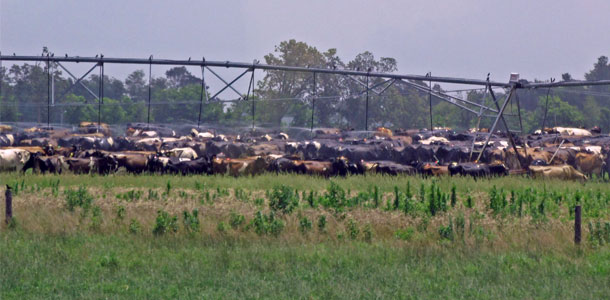Dairy tours and on-farm education has been proven to be one of the best learning tools for farmers; however, sometimes being a dairy farmer makes it hard to step away from the operation when there are so many chores to be completed. The opportunity to see operations in action that are being profitable may make that step worthwhile.
The KYFarmStart program began in 2013. This program is supported by the Beginning Farmer and Rancher Development Program of the National Institute for Food and Agriculture and USDA, and is coordinated by the Kentucky Dairy Development Council and University of Kentucky Department of Animal and Food Sciences.
Opportunities through the program have included a Virginia tour in 2013, several farmer-included conference calls and a three-day short course at the UK Coldstream Dairy. This program has focused on the transitioning and first-generation dairy farmers to help them see and learn about various aspects of dairy farming. The most recent opportunity was a finale tour to Missouri.
 Peter Gaul explains the unique solids separator used at Tribute Dairy.
Peter Gaul explains the unique solids separator used at Tribute Dairy.
The first day stops on the tour were the Tribute Dairy in Benton, Missouri, and the Telle Dairy in Perryville, Missouri. Tribute Dairy was a New Zealand style dairy, milking 1,000 crossbred cows, twice a day, with a rolling herd average (RHA) of 15,000. The operation is primarily a grazing herd with center pivot irrigation used both for forage production and cattle cooling. One of the best quotes of the tour was, “Production is vanity, and profitability is sanity,” said by Peter Gaul, owner of Tribute Dairy.
Telle Dairy was also primarily a grazing herd, but their approach was much different from Tribute. Telle Dairy milks about 40 cows now, but they started with a 60-cow herd in 1997. Their herd consists of all Jerseys with a 13,500 RHA. They pride themselves on good quality milk on low inputs. They began on their own from scratch with a great motto: “Gotta have faith.” And faith has brought them a long way.
Day two consisted of a major change in farming practices from day one. The day began at the Scheer Dairy in New Haven, Missouri, and finished up at the University of Missouri Foremost Farm in Columbia, Missouri.
Scheer Dairy was purchased in 1897 and has progressed in current technologies to Lely robotic milkers. Today they are milking 135 cows, and the cows decide how many times a day they want to be milked. It varies from two to six times a day with a 25,000 RHA.
The second visit was at the University of Missouri Foremost Farm. This farm is half research and half production based, a little different than a family farm. They are currently milking 190 cows, with 20 to 30 being Guernseys. The RHA on the Holsteins runs 23,800 and 15,000 on the Guernsey herd, on twice a day milking. While they do focus on some research, their management reflects production as an important aspect.
 The crossbred herd at Tribute Dairy cools off under the center pivot irrigation system. Photos by Teri Atkins.
The crossbred herd at Tribute Dairy cools off under the center pivot irrigation system. Photos by Teri Atkins.
The final tour stop was at the Purina Research Farm in Gray Summit, Missouri, which was started in 1894 by William Danforth. Research actually began in 1916 with only 260 acres and has grown to the current size of 1,200 acres. The main goal was to “establish a culture, not a company.”
The operation is now owned by Land O’Lakes and has 125 patents, 3,000 animals, 81 horses, 320 beef cattle, 200 dairy animals and 200 swine. So no, the Purina Research Farm is not similar to a Kentucky dairy farm in its structure, but the management of the dairy cattle was impressive. The milking herd is pumping out a 27,000 RHA on three times a day milking, with a 198,000 SCC. They are also unique in that they sell compost. They turn their compost every two weeks, and in 90 days, it is ready to buy at $9 a cubic yard.
The producers involved in the KYFarmStart program have had opportunities that many other states do not offer. The chance to see different farming practices that work in real life, the opportunity to have hands-on experiences with herd health and the chance to speak with some of the leading experts in the dairy industry have all been beneficial in the learning process for beginning farmers. In Kentucky the number of dairy farms may be decreasing; however, the quality of farms and producers is more vibrant than ever.



